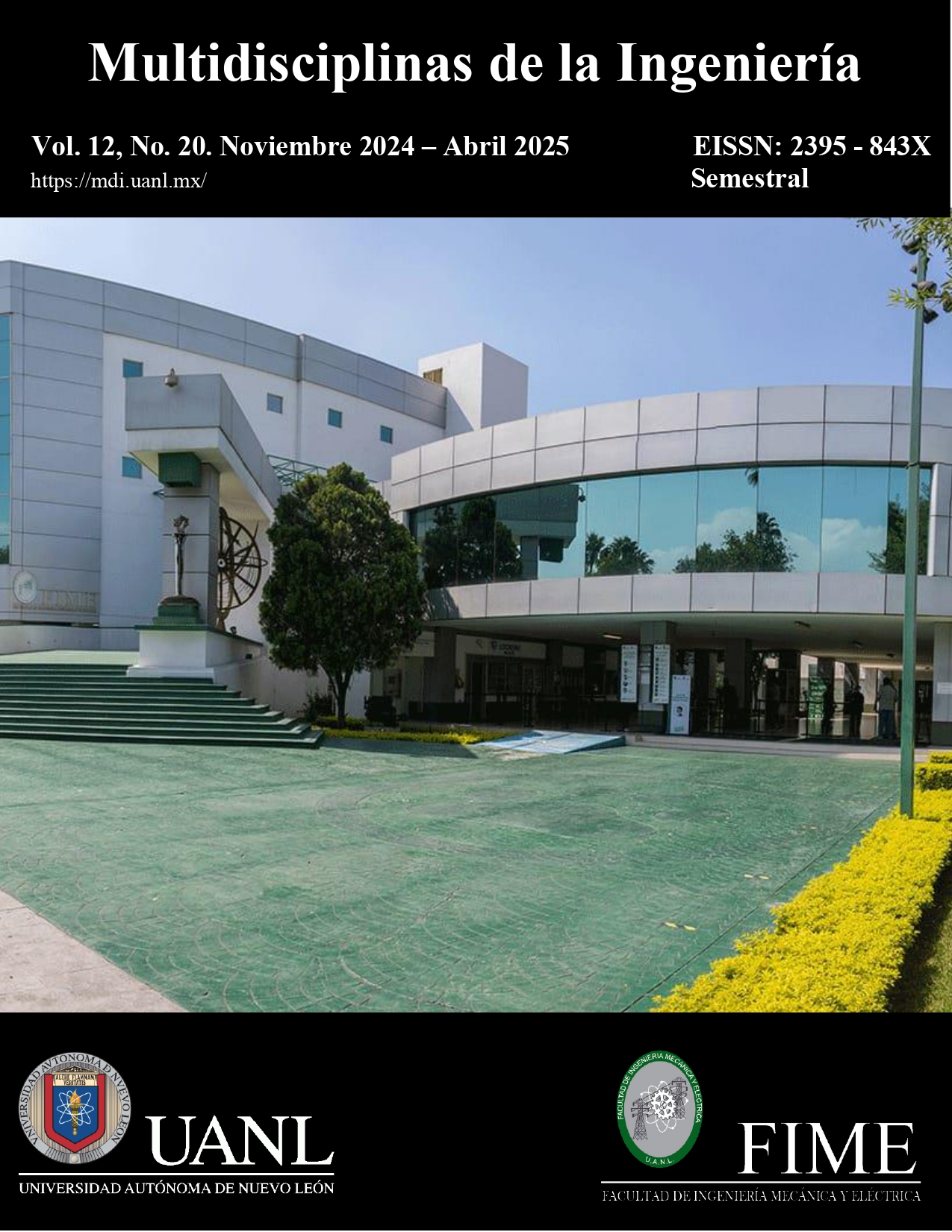Optimization of mechanical properties of a synthetic agglomerate by response surface methodology
DOI:
https://doi.org/10.29105/mdi.v12i20.324Keywords:
binders, binder, reinforcement, mechanical properties, flexural modulusAbstract
Optimization of mechanical properties of synthetic agglomerates using Response Surface Methodology (RSM) is an effective approach to optimize formulations and processes. Therefore, the objective of this work was to implement a Central Composite Design (CCD) in conjunction with an RSM for the prediction of the flexural mechanical properties of a synthetic agglomerate based on reinforced poly(lactic acid) (PLA) with natural fibers obtained from the coconut palm (Cocus nucifera L). To do this, the following independent variables were taken into account: A: fiber length (mm), B: binder concentration (%), C: thermoforming temperature (°C) and D: thermoforming pressure (kPa). The static bending elastic modulus (R1) was proposed as the response variable. Design-Expert 7.0.0 software was used to process the data. The combination of the coded levels for the independent factors, which maximizes the response variable R1 (theoretical module) is obtained when A= -2, B= -1.88, C= -2 and D= 0.21, resulting in a module elastic at bending of 474 MPa. This result was validated through a confirmatory experiment (n=5), obtaining an elastic flexural modulus of 453 MPa, very close to that obtained in the theoretical value
References
Lemus, J.E.G., Propiedades Físico Mecánicas de la madera plástica elaborada con polímeros reciclados como aglutinantes. Revista Canalización del Conocimiento Científico, 2022. 1.
Luna, P. and J.M. Lizarazo-Marriaga, Fibras naturales como refuerzo en materiales compuestos de matriz polimérica. Momento, 2022(65): p. 65-79. DOI: https://doi.org/10.15446/mo.n65.103151
Gumus, N., E. Doganci, and A. Aytac, Evaluations of the effects of different flame retardants combinations on particleboards produced using urea–formaldehyde resin. European Journal of Wood and Wood Products, 2024. 82(3): p. 747-759. DOI: https://doi.org/10.1007/s00107-024-02054-6
Thakur, H.K. and G. Prasad, Mode 1, Mode II, and Mixed Mode I/II Fracture Behavior of Laminated Structures, in Fracture Behavior of Nanocomposites and Reinforced Laminate Structures. 2024, Springer. p. 123-155. DOI: https://doi.org/10.1007/978-3-031-68694-8_6
Prvanov, S., The refurbishment of M/V Anna Maru four samples of using durable wood products in passenger ship interior and exterior design. Journal of Wood Science, 2017. 5.
Ramezani Dana, H. and F. Ebrahimi, Synthesis, properties, and applications of polylactic acid‐based polymers. Polymer Engineering & Science, 2023. 63(1): p. 22-43. DOI: https://doi.org/10.1002/pen.26193
Ajaj, Y., et al., Effect and investigating of graphene nanoparticles on mechanical, physical properties of polylactic acid polymer. Case Studies in Chemical and Environmental Engineering, 2024. 9: p. 100612. DOI: https://doi.org/10.1016/j.cscee.2024.100612
Batista-Menezes, D., et al., Nanocelulosas a partir de biomasas con amplio potencial industrial en Costa Rica. NANOCELIA: p. 111.
Satyanarayana, K., J. Guimarães, and F. Wypych, Studies on lignocellulosic fibers of Brazil. Part I: Source, production, morphology, properties and applications. Composites Part A: Applied Science and Manufacturing, 2007. 38(7): p. 1694-1709. DOI: https://doi.org/10.1016/j.compositesa.2007.02.006
Inegbedion, F., F. Inegbedion, and I.E. Osasona, Coconut Fibre (Coir) Composites: A Review. Journal of Materials Engineering, Structures and Computation, 2024. 3(2).
Rencoret, J., et al., Structural characterization of lignin isolated from coconut (Cocos nucifera) coir fibers. Journal of agricultural and food chemistry, 2013. 61(10): p. 2434-2445. DOI: https://doi.org/10.1021/jf304686x
Boublia, A., et al., State-of-the-art review on recent advances in polymer engineering: modeling and optimization through response surface methodology approach. Polymer Bulletin, 2023. 80(6): p. 5999-6031. DOI: https://doi.org/10.1007/s00289-022-04398-6
Downloads
Published
How to Cite
Issue
Section
License

This work is licensed under a Creative Commons Attribution-NonCommercial-NoDerivatives 4.0 International License.





